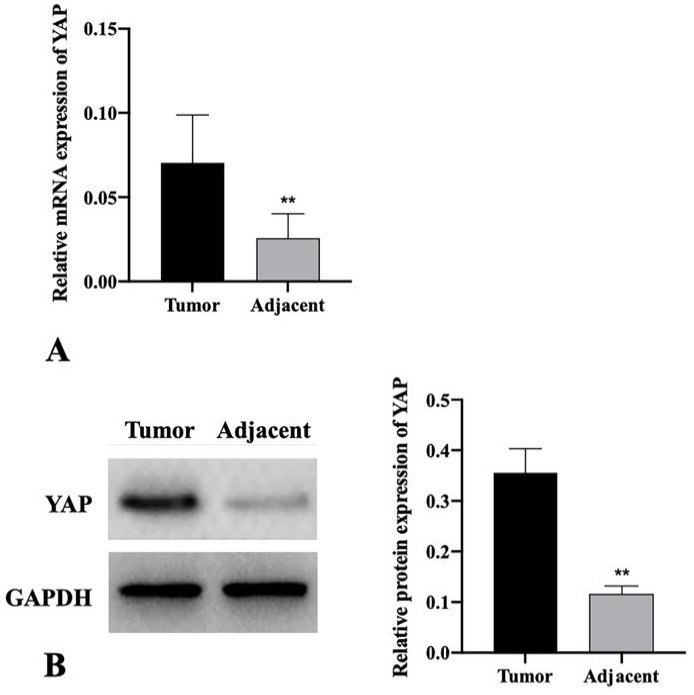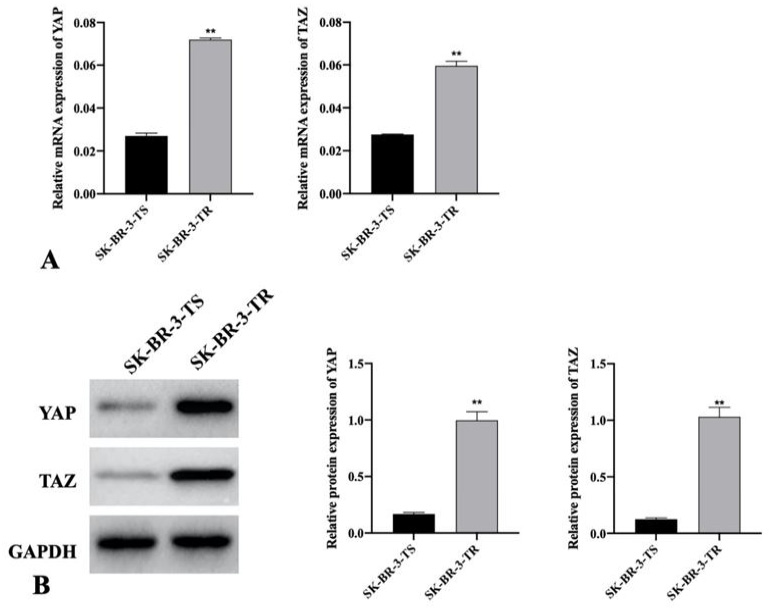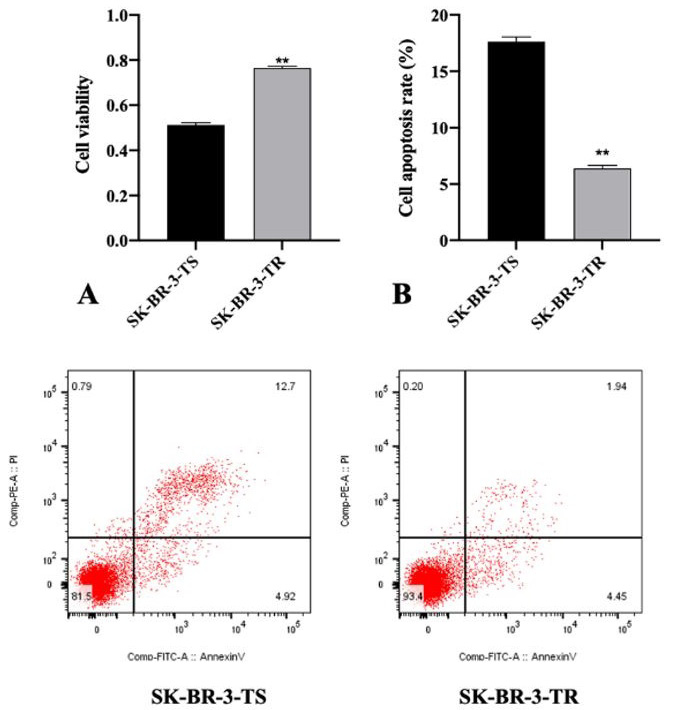YAP/TAZ Pathway Promoted the Trastuzumab Resistance in HER2-Positive Breast Cancer
YAP/TAZ Pathway Promoted the Trastuzumab Resistance in HER2-Positive Breast Cancer
Wei Wang1, Meifeng Zhou2, Yuebo Liang1, Fan Zhang1, Zhong Wu3, Shaowei Mo4* and Yi Qing Wang1*
Expression of YAP in clinical tissues of HER2 positive breast cancer patients. (A) Protein expression of YAP detected by western blotting. (B) Relative mRNA expression of YAP determined using RT-qPCR. ** P<0.01 vs tumor group (Student’s t tests).
Expression of YAP/TAZ in vitro. (A) Protein expression of YAP and TAZ detected by western blotting. (B) Relative mRNA expression of YAP and TAZ determined using RT-qPCR. ** P<0.01 vs SK-BR-3-TS group (Student’s t tests).
Cell viability was increased while cell apoptosis was inhibited in SK-BR-3-TR cells. (A) Cell viability detected by MTT assay. (B) Cell apoptosis analyzed by flow cytometry. ** P<0.01 vs SK-BR-3-TS group (Student’s t tests).
Depletion of YAP reversed the induced trastuzumab resistance in SK-BR-3-TR cells. (A) Protein expression of YAP and TAZ detected by western blotting. (B) Cell apoptosis analyzed by flow cytometry. (C) Cell viability detected by MTT assay. ** P<0.01 vs SK-BR-3-TS group. ## P<0.01 vs SK-BR-3-TR group (One way ANOVA).














